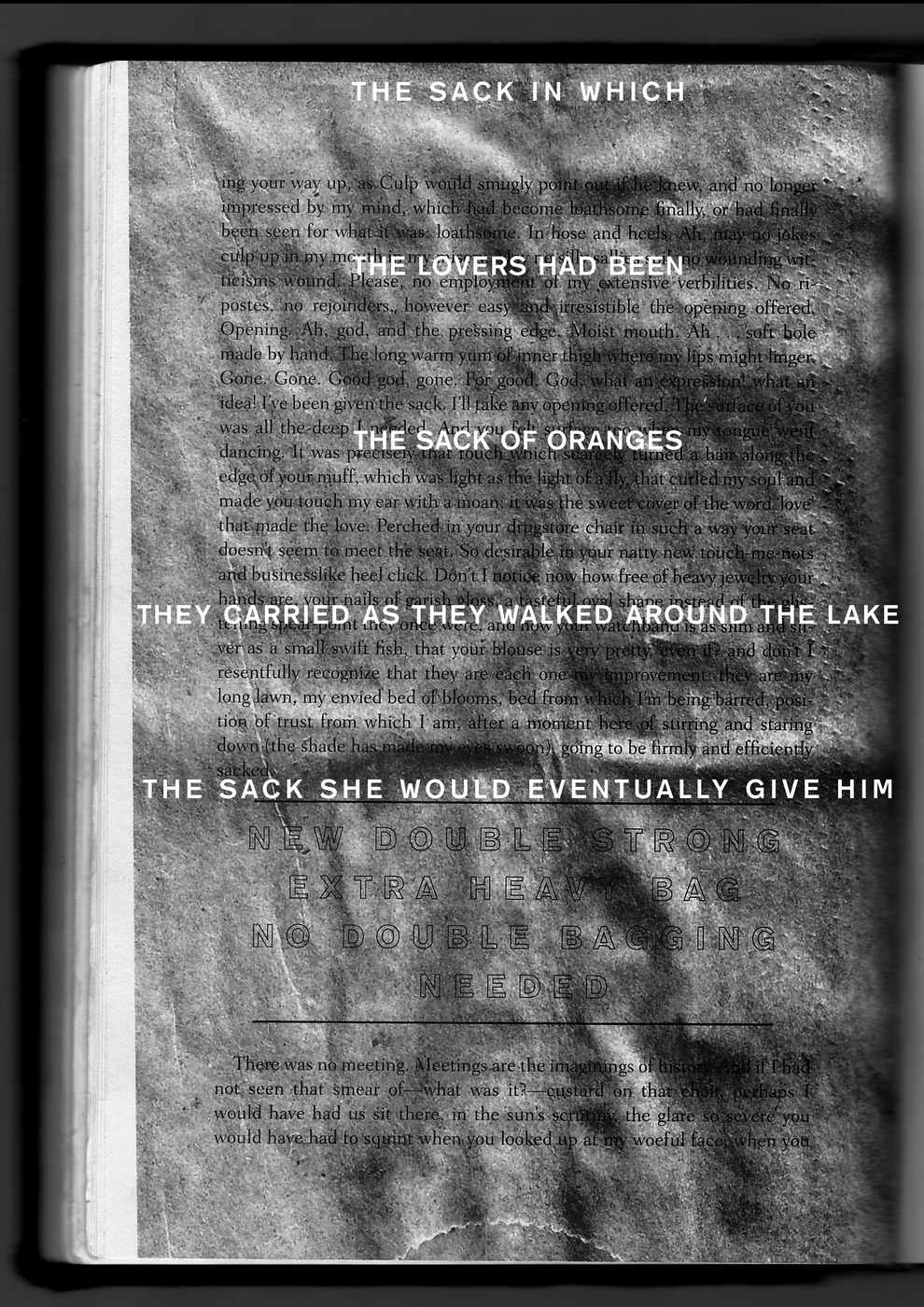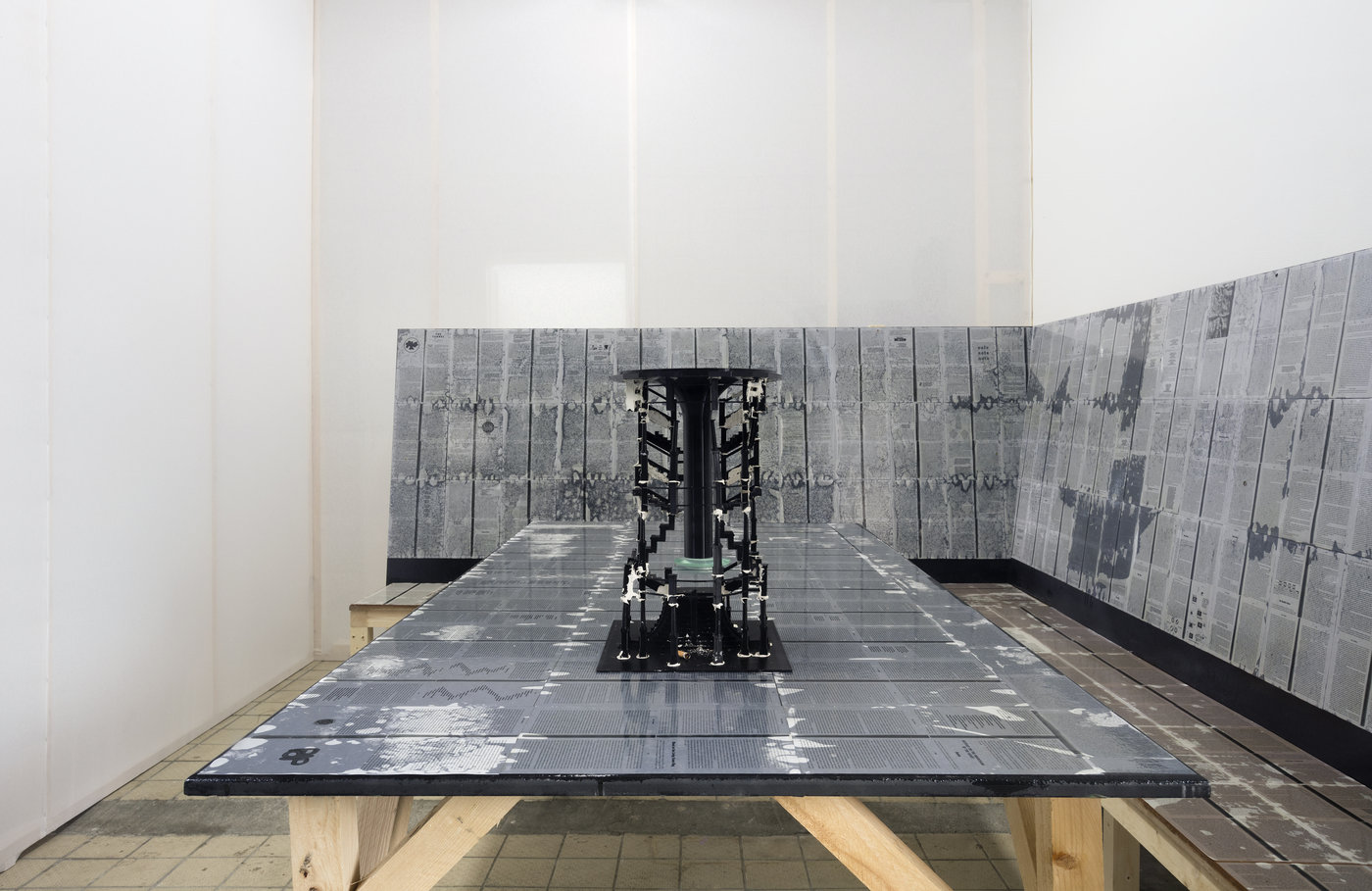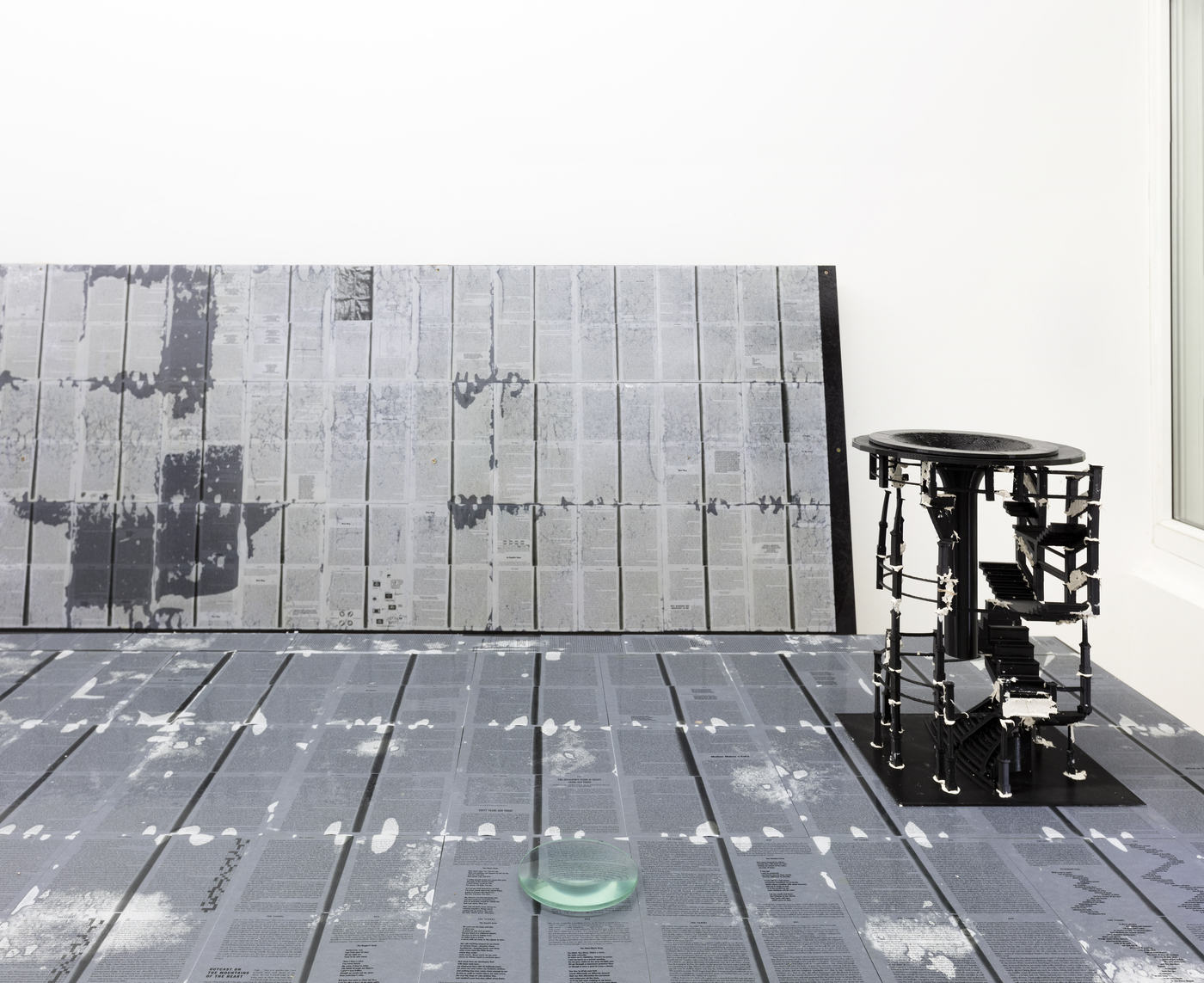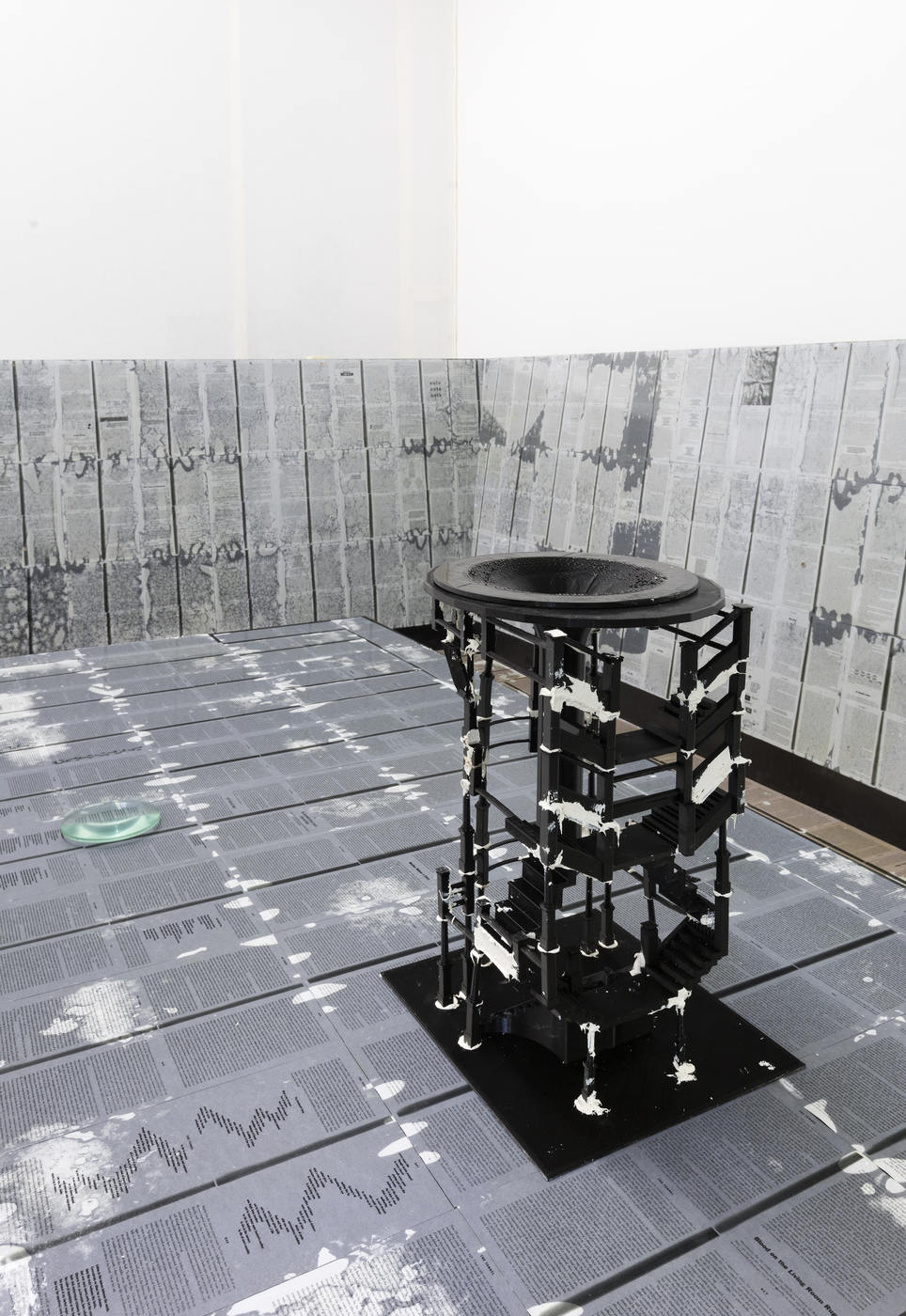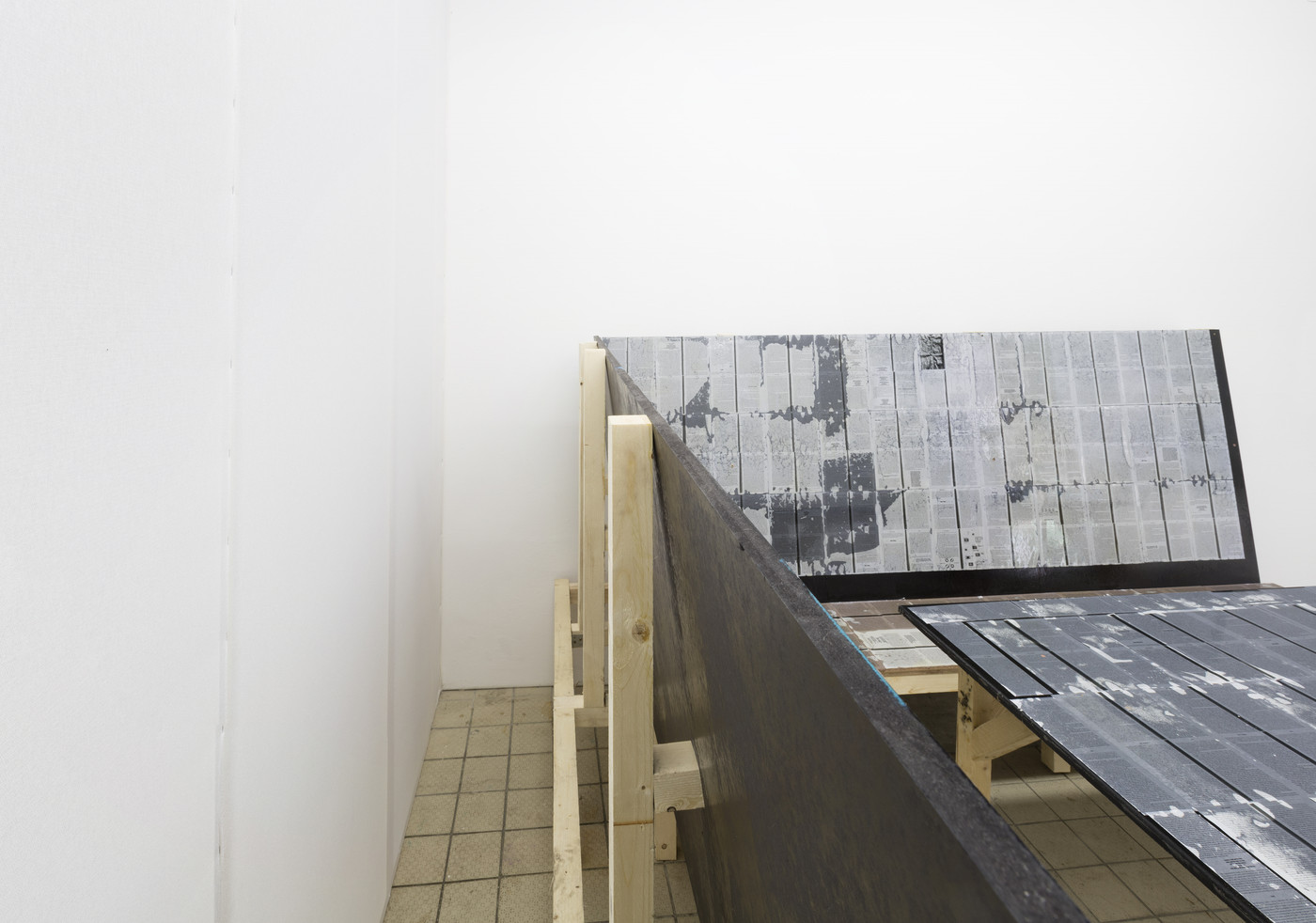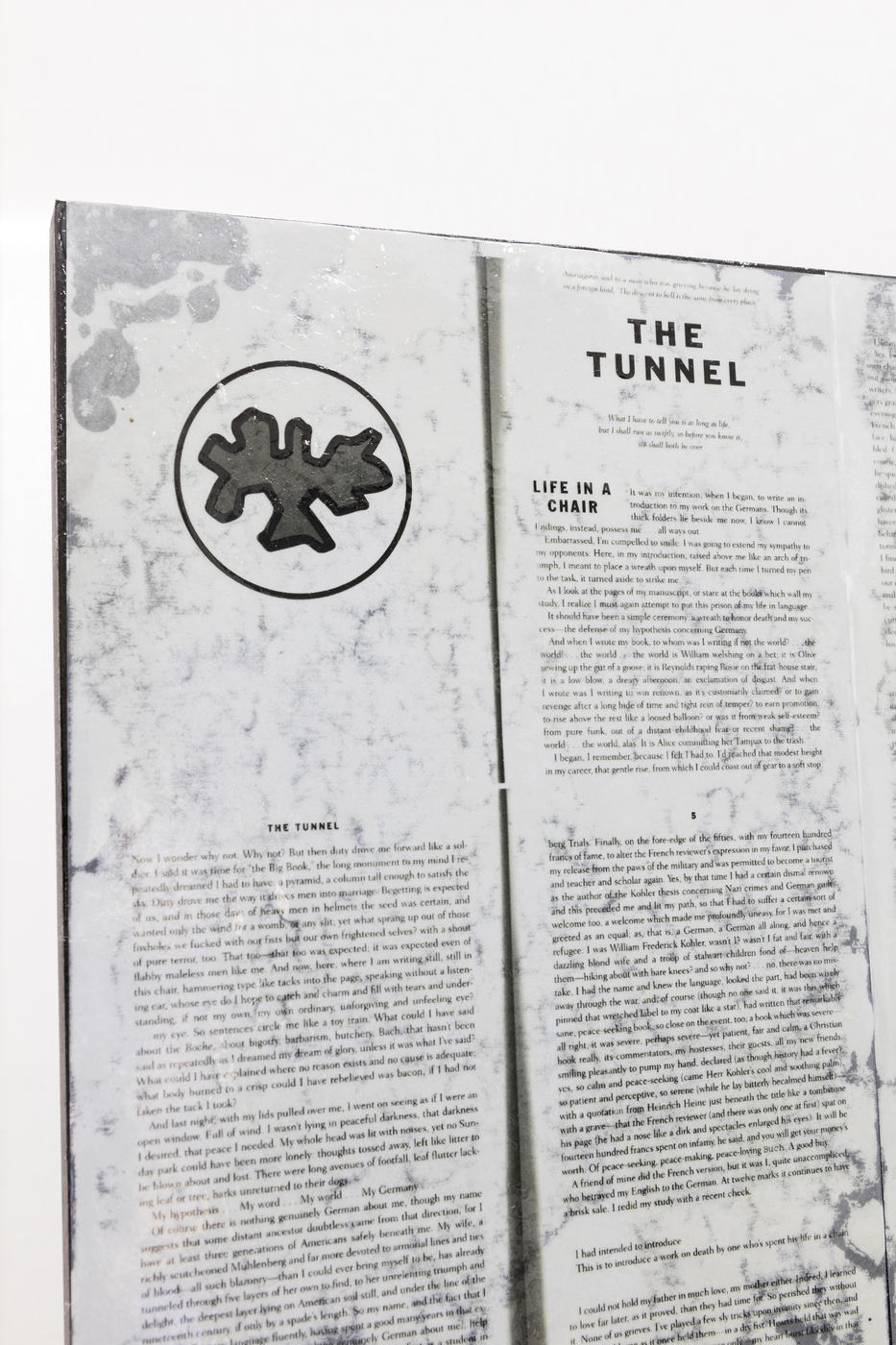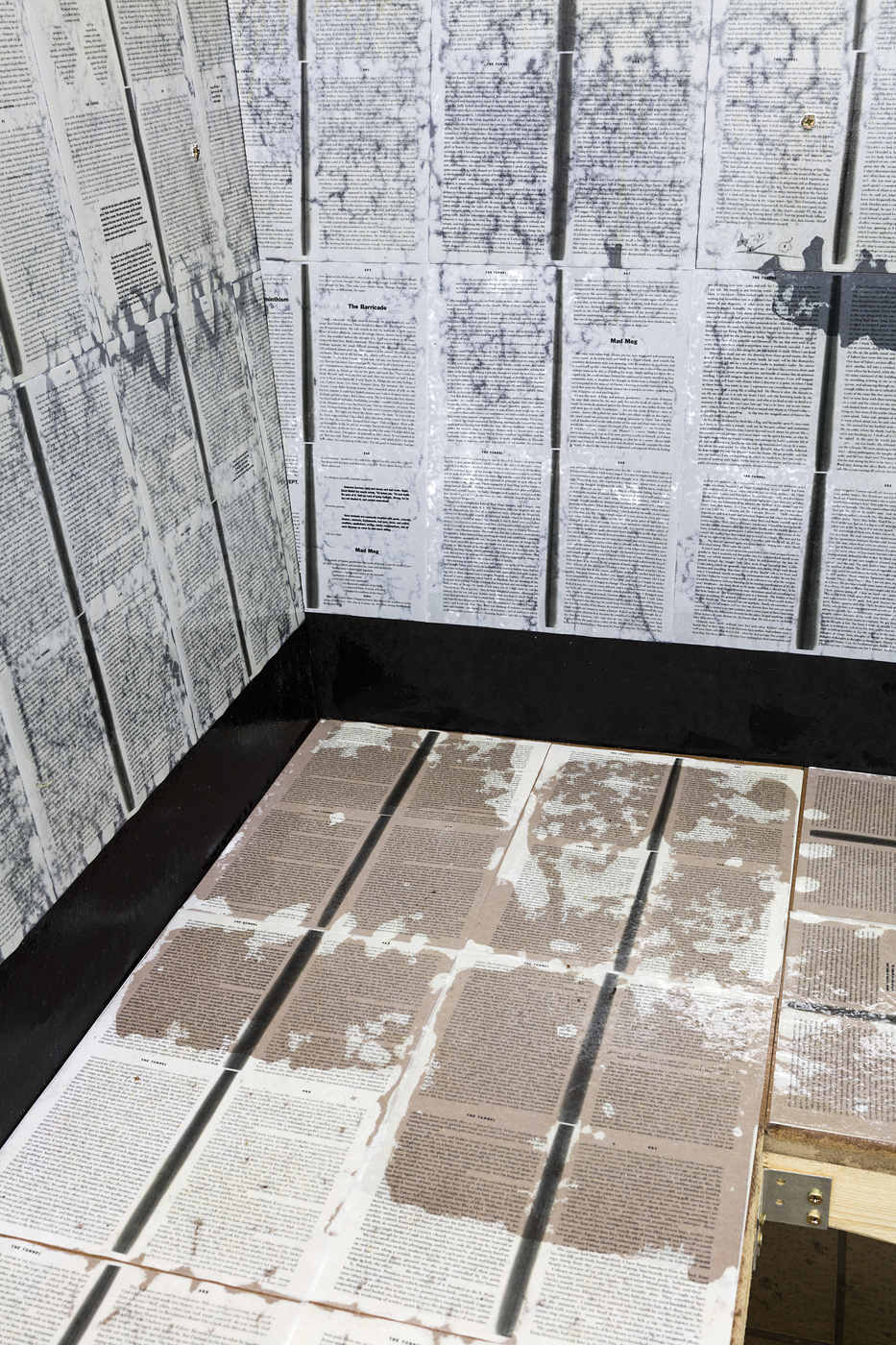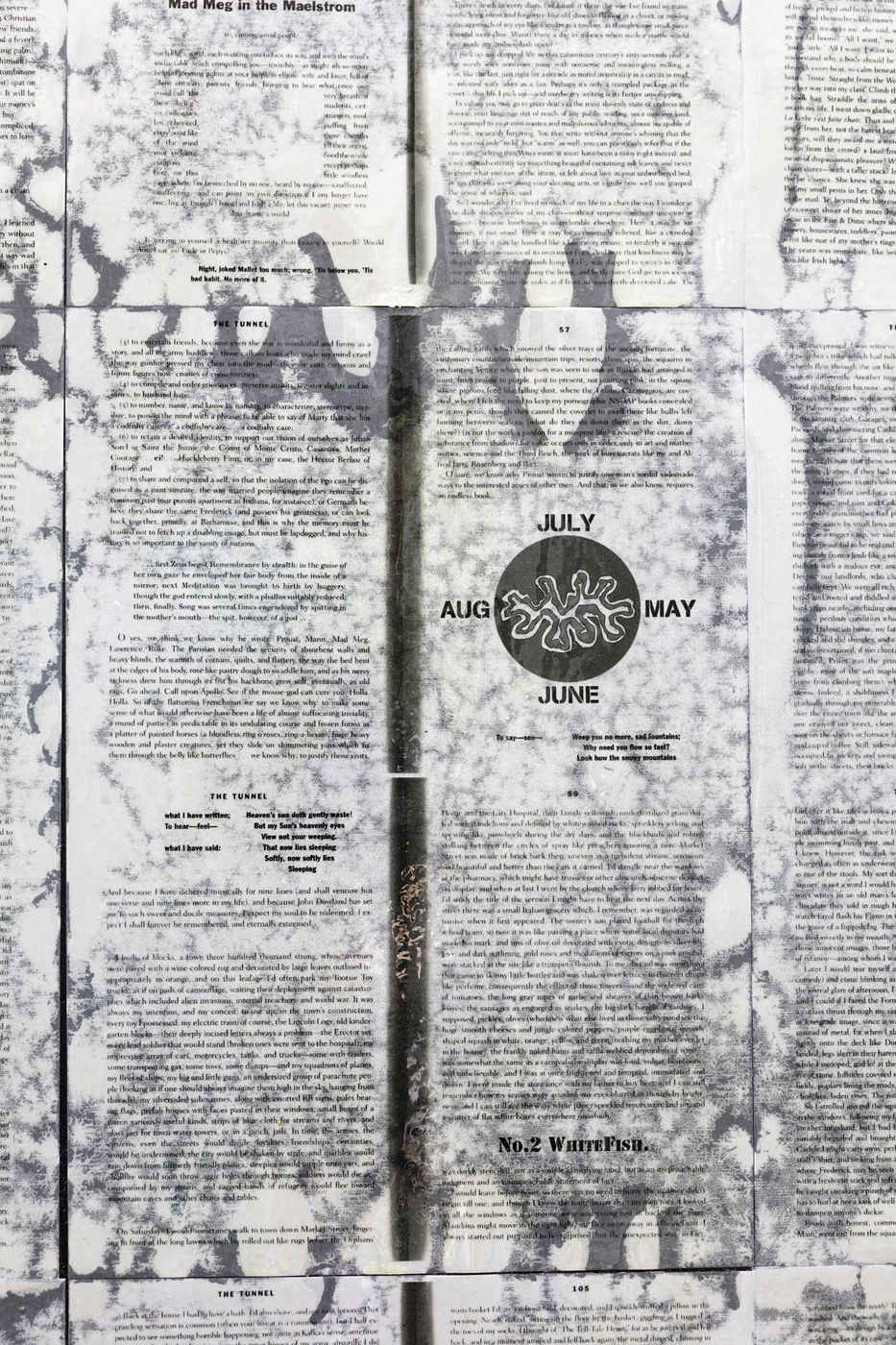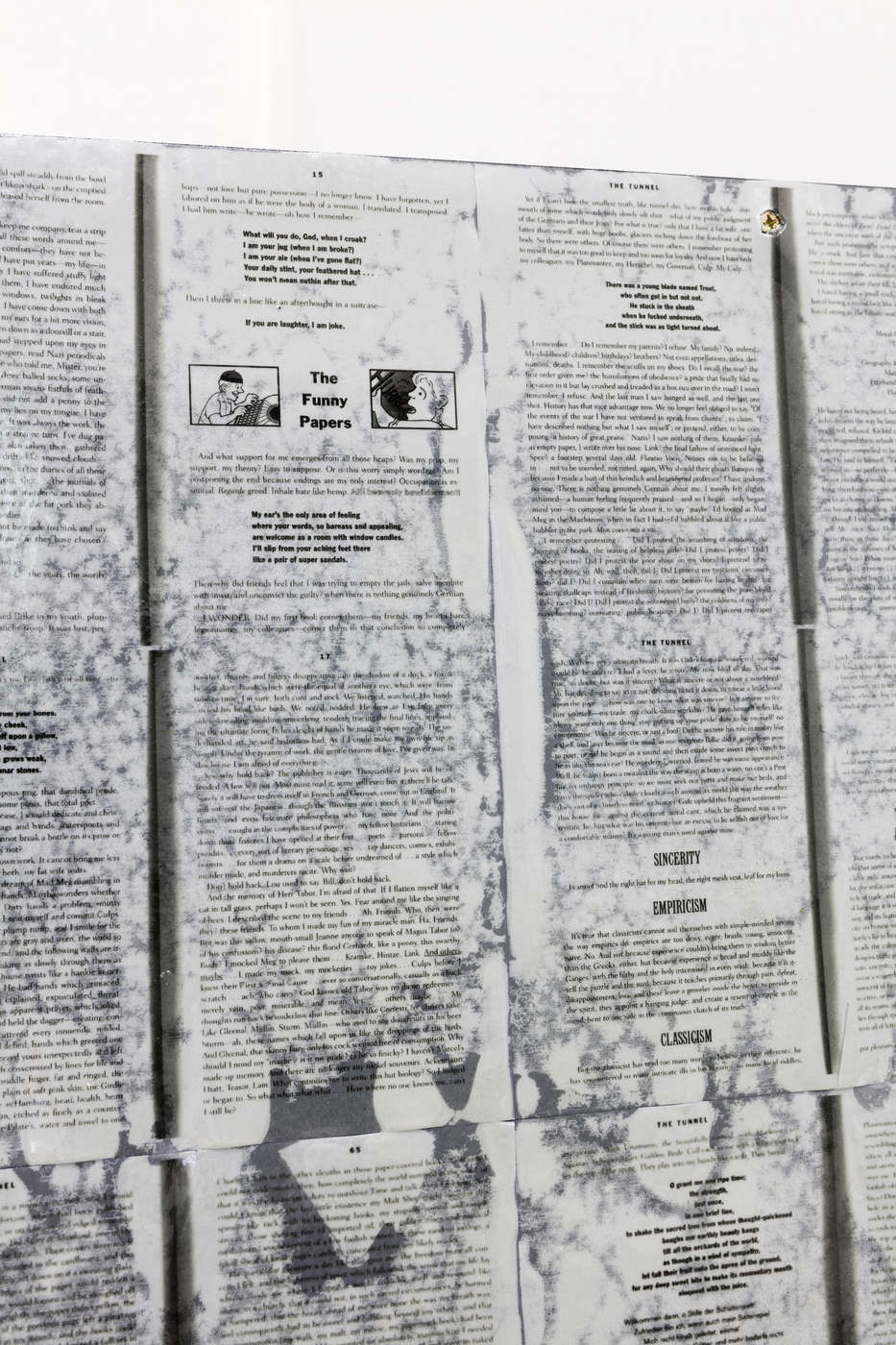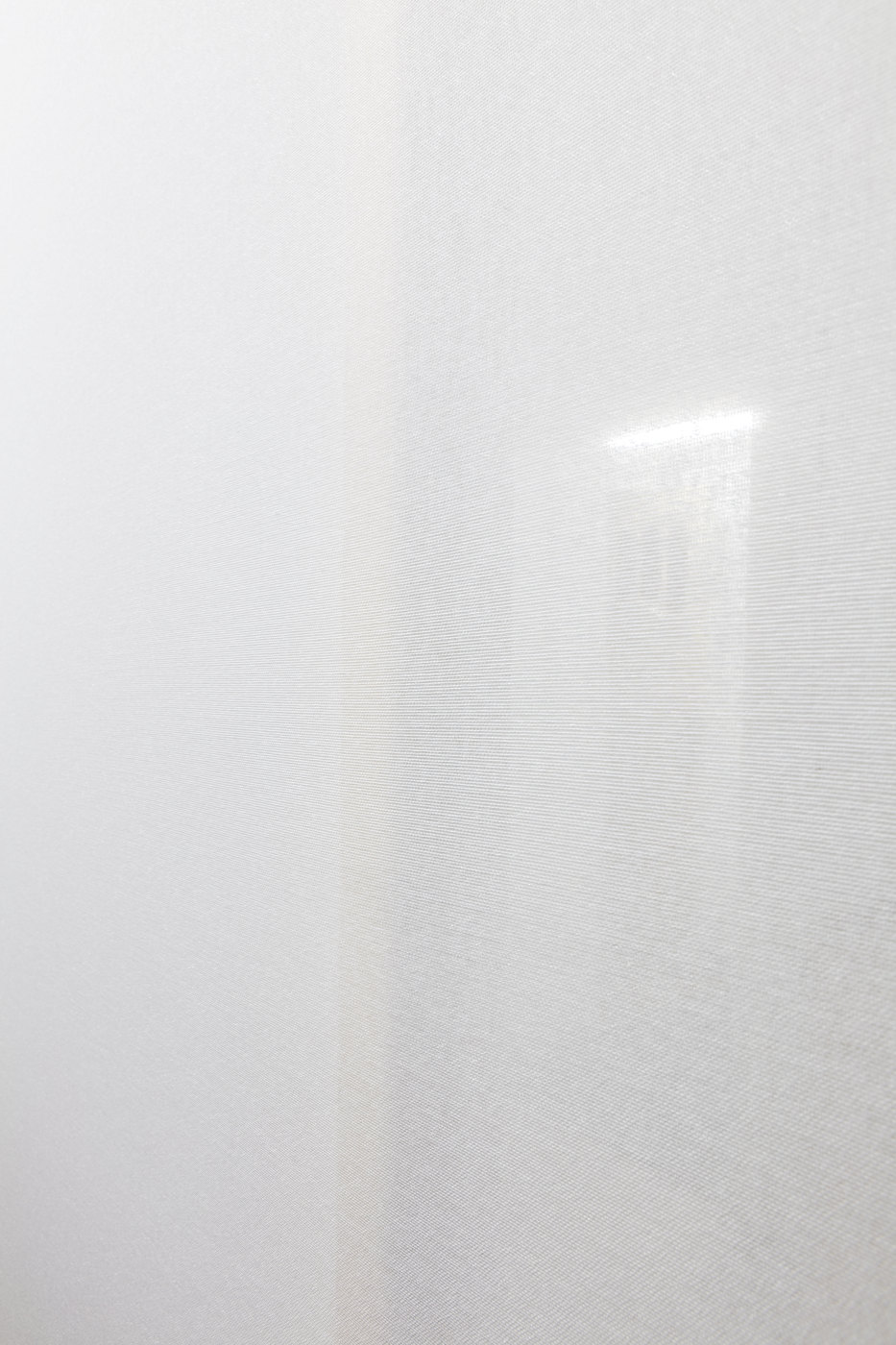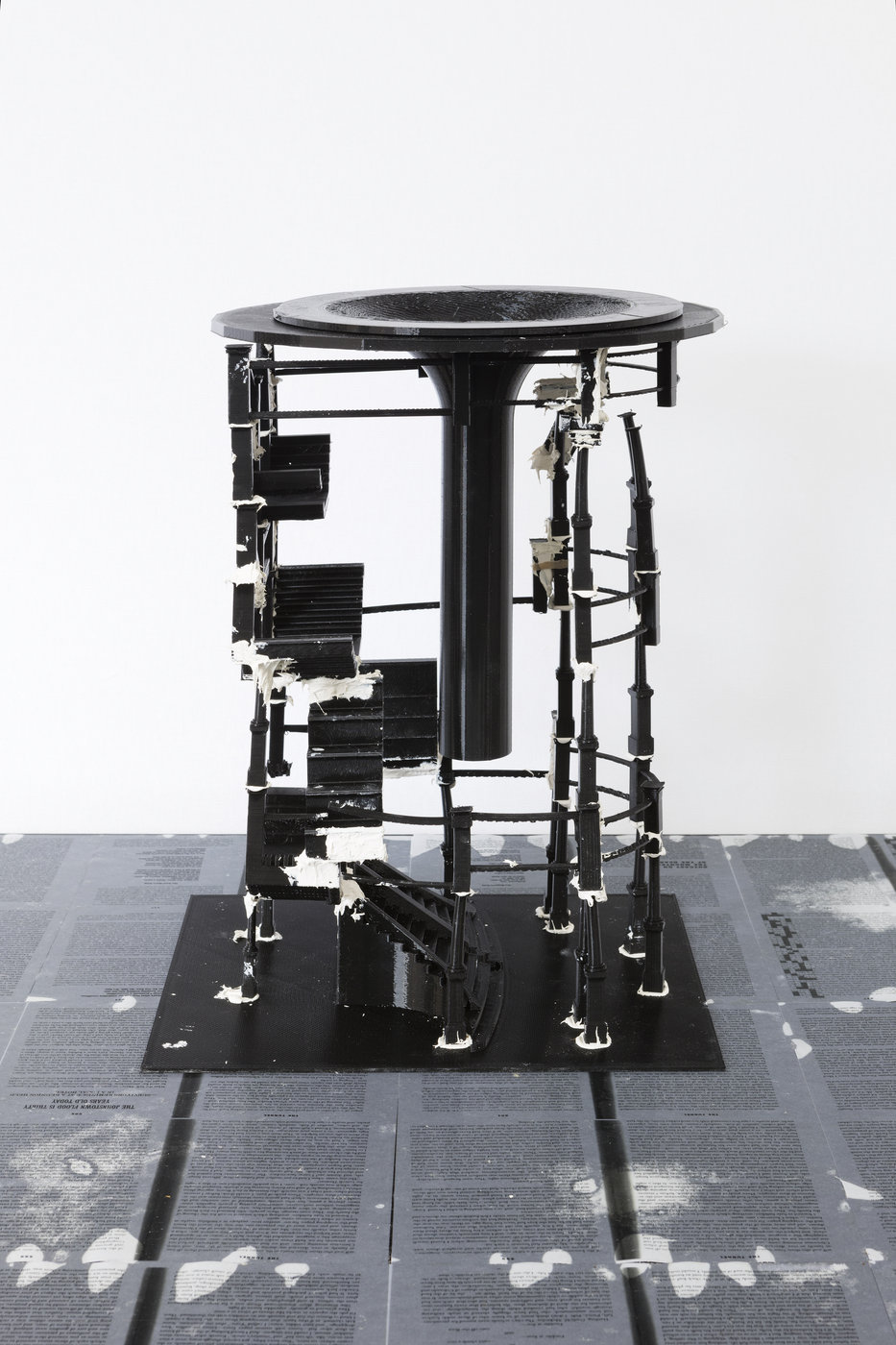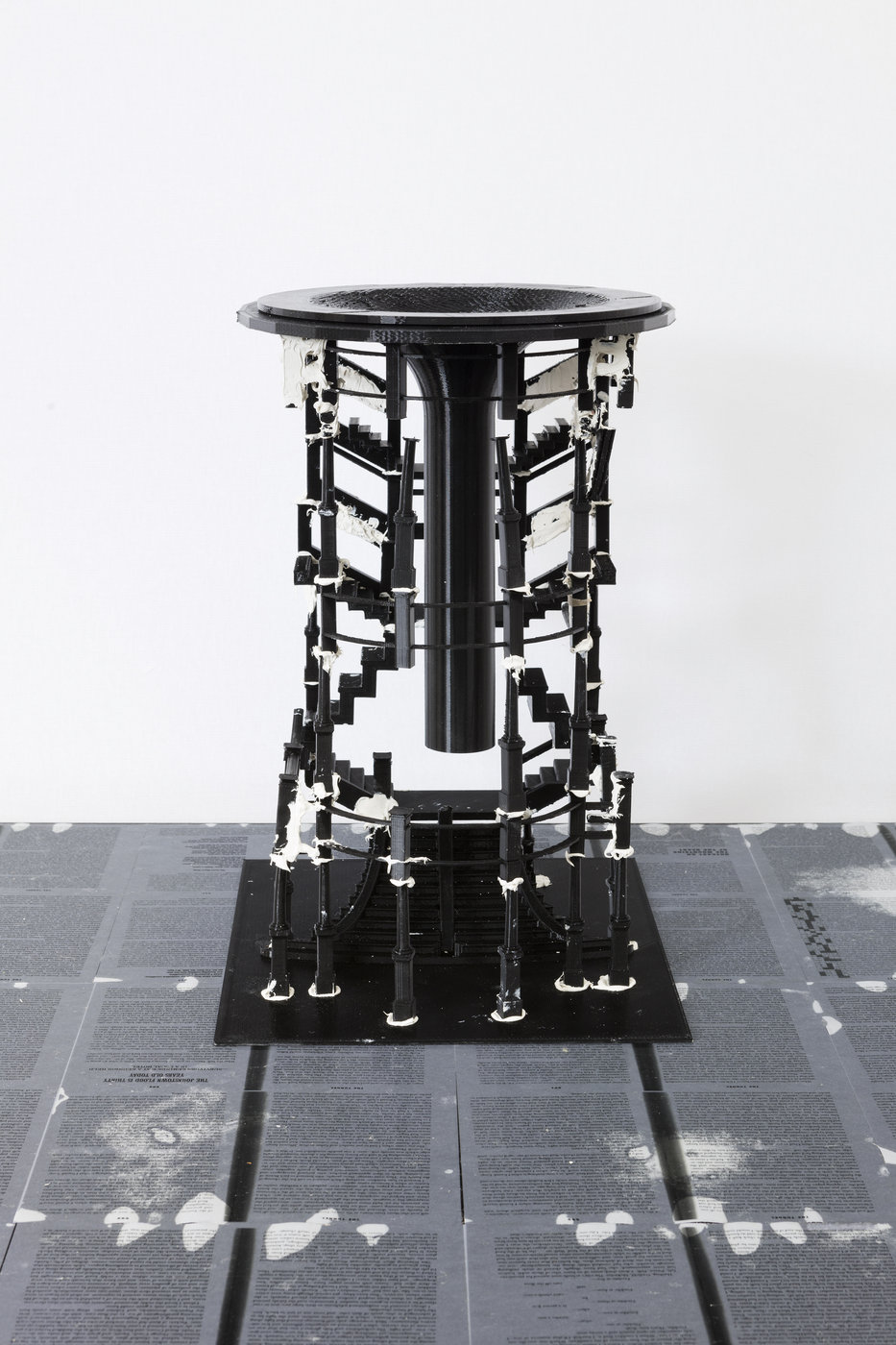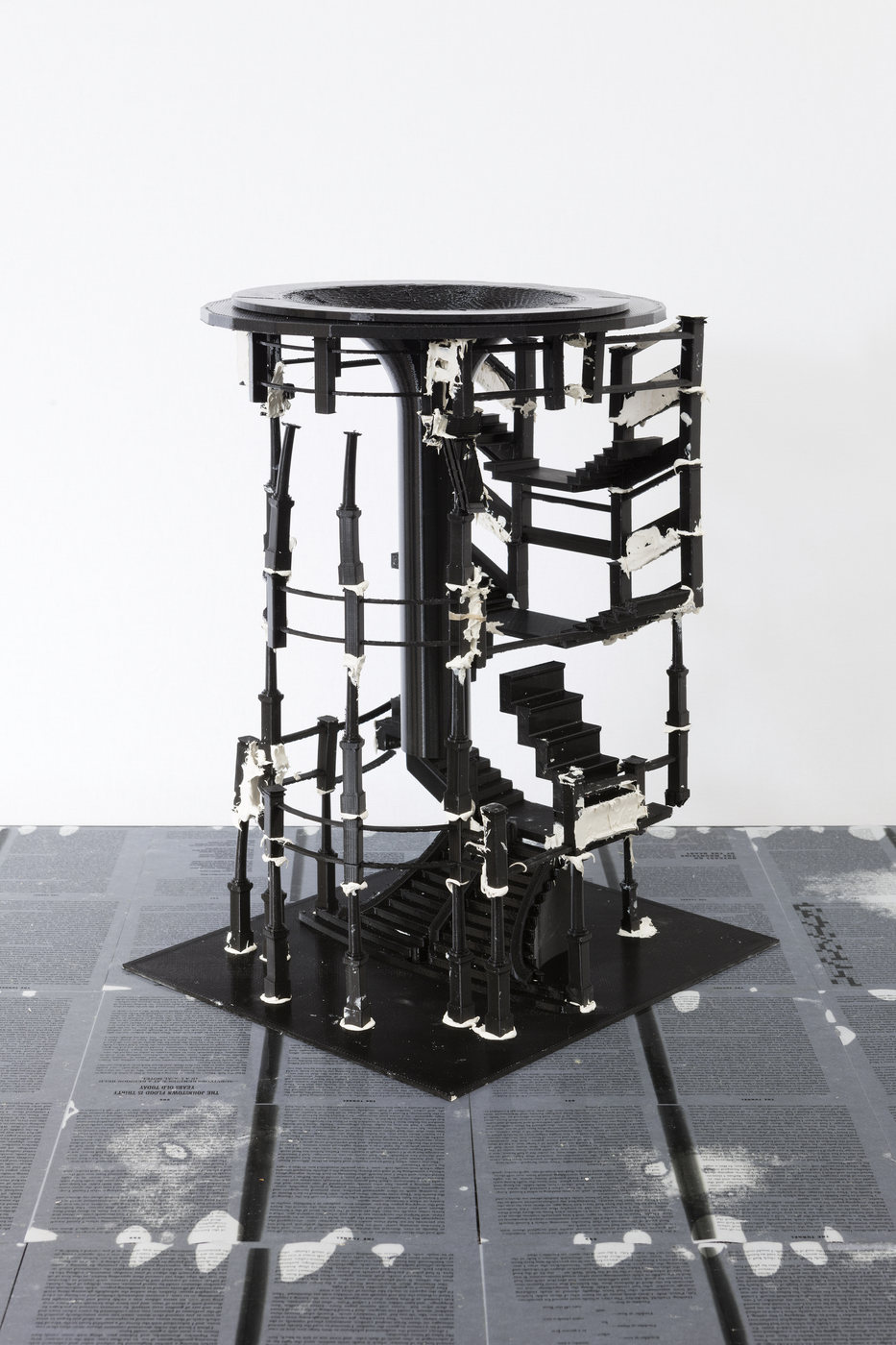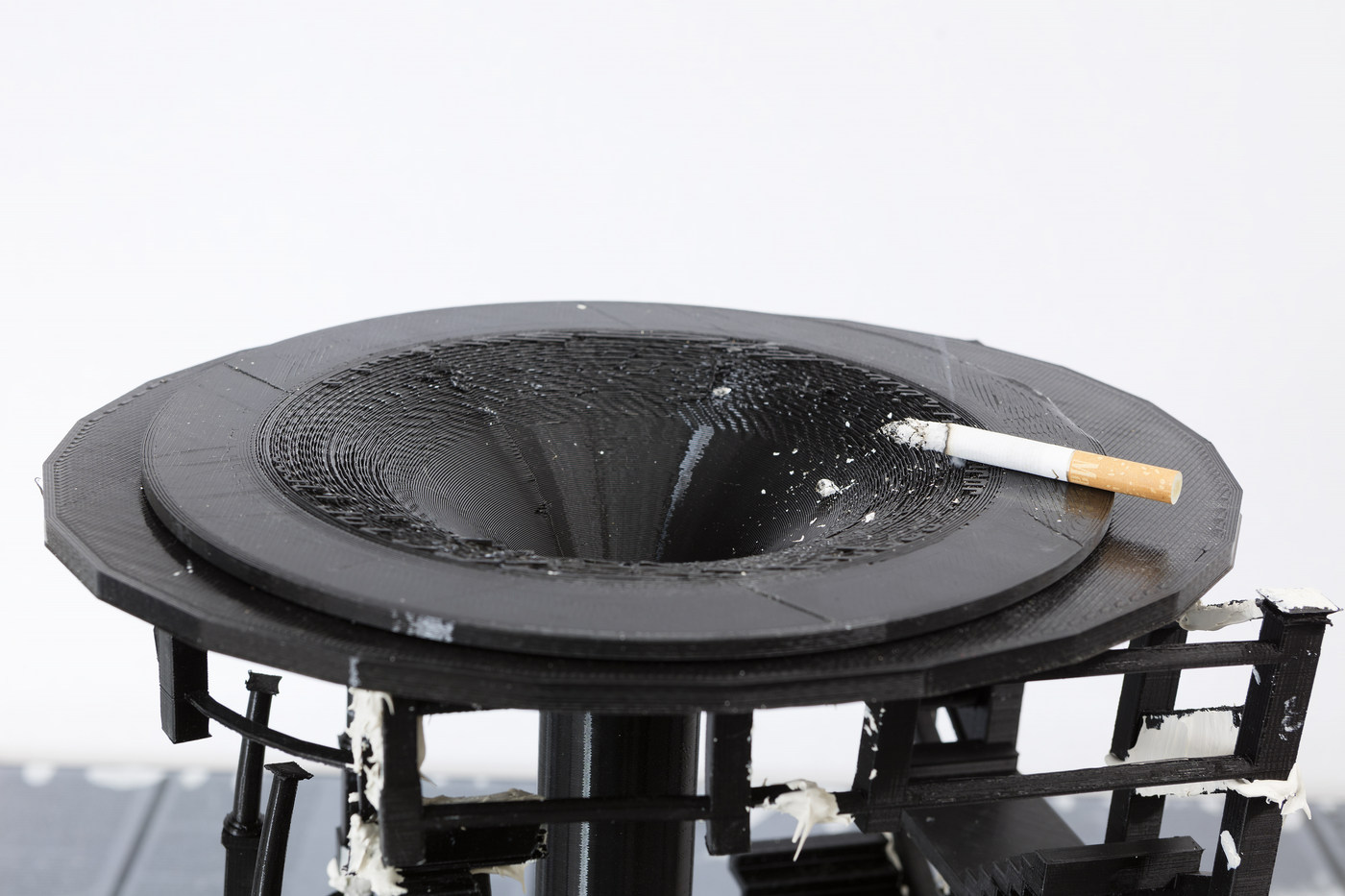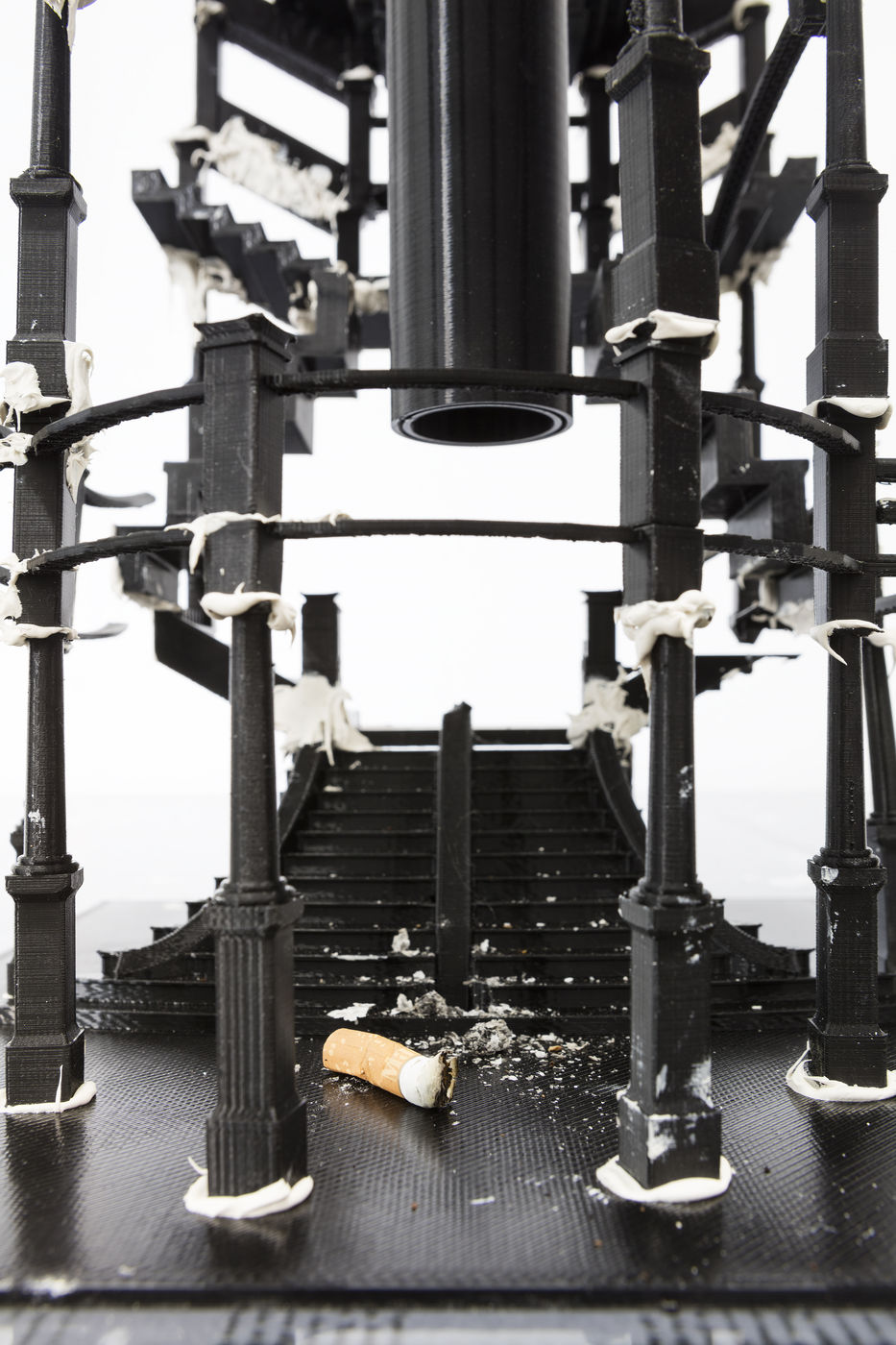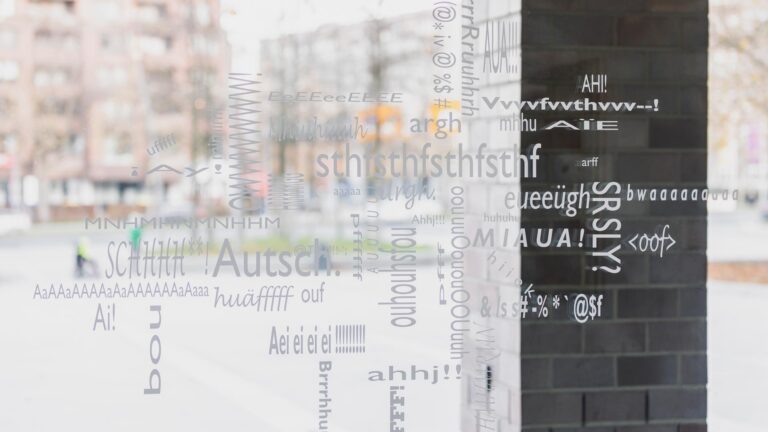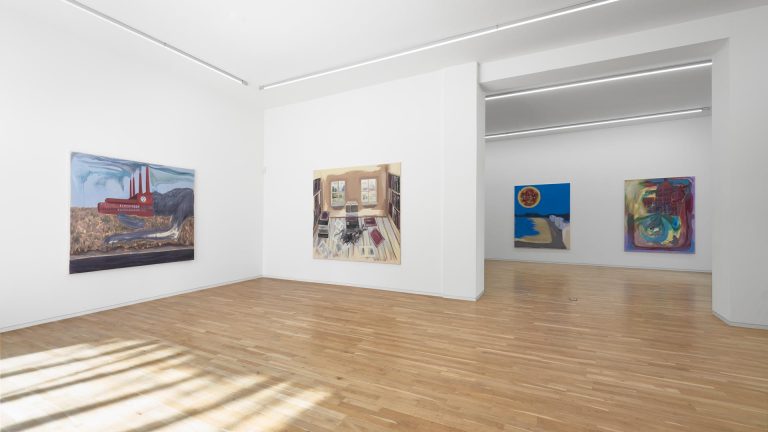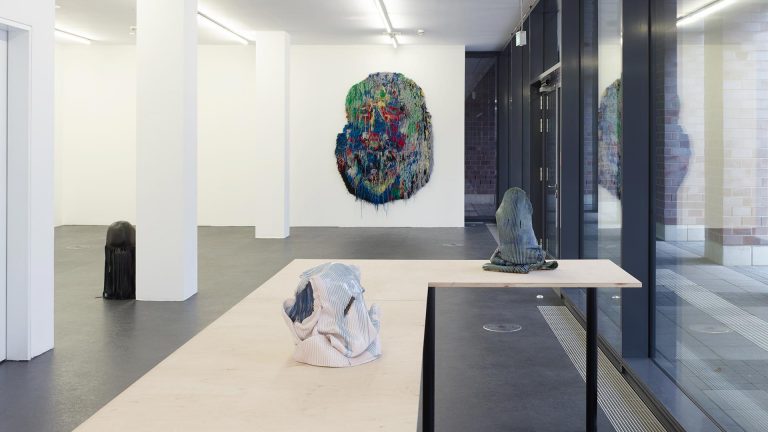Artist: Grayson Revoir
Exhibition title: The Funnel
Venue: Frankfurt am Main, Berlin, Germany
Date: June 5 – July 3, 2016
Photography: all images copyright and courtesy of the artist and Frankfurt am Main
The Tunnel by William H. Gass is a novel I’ve been reading live on Berlin Community Radio once a week for an hour over the last two years. It’s a very long book, and one appealing to a reader who brings a certain sense of adventure. Not only is any sense of narrative completely fragmented, the book is filled with design interventions that affect the page: from subtle changes in font to mutations where paragraphs and words become images and columns that reflect the point of view of its protagonist William Frederick Koehler— a professor of History at a midwestern American university who has just written his magnum opus (Guilt and Innocence in Hitler’s Germany)—but when he finds himself with the task of writing the introduction he is unable, so he begins to secretly dig a tunnel from underneath his home office as a means of escape.
Best described as a verbal, visual and musical hole, The Tunnel compares visual feelings of immense beauty and sophistication of language within the text to a subject as horrific as Hitler’s Germany. {History}
William H. Gass says of his writing in a interview:
“I always wanted the words to be in the mouth, also in the eye, but in the mouth.
To be chewed…reading is accompanied by a lot of muscular activities you’re making.
So I always wanted the words to be in the mouth, to be chewed.”
It’s true, that while reading The Tunnel, one finds himself needing to mouth the sentences in order to thoroughly see them in the same way touching a sculpture is instinctual when its material is of beckoning tactility. Departing from this idea, through the formal constraints of internet radio, the alteration became putting those words into the ear knowing the brain would swiftly delivered them to the mouth. I thought ‘what a joy it is to read these words, what a joy it would be to hear them read.’
For the exhibition at Frankfurt-Am-Main, the book has been transposed into a social space where the text itself is the upholstery for the arrangement of furniture that occupies the exhibition. When sitting on the bench and leaning on the table, you’re surrounded by this book and invited to examine it closely in parts with various magnifying lenses available for use. Also available for use is the table’s center piece, an architectural model cum ash tray in the shape of a funnel /black hole supported by multi fragmented levels of a grand staircase, carrying the thought of (mind and matter) moving through architecture as a means of escape.


